The Odoo clothes management system is designed to streamline and simplify all the business process , making it more easier for both customers & companies to mange the operations , A robust clothes management system and e-commerce platform are essential for any clothing business. It enables the efficient management of customers, orders, and full oversight of processes—from order placement to delivery. The primary benefits of implementing such a system are:
1. Streamlined Operations: Our system saves time and improves workflow efficiency through a highly organized approach, reducing manual tasks and errors.
2. End-to-End Process Oversight: Gain comprehensive control over every stage of your business operations, including inventory management across different categories and branches, employee activity tracking, invoice generation, and payment details.
3. Comprehensive Reporting: The system generates detailed reports that analyze every process, providing valuable insights to assist in decision-making and strategy development.
flexible user interface
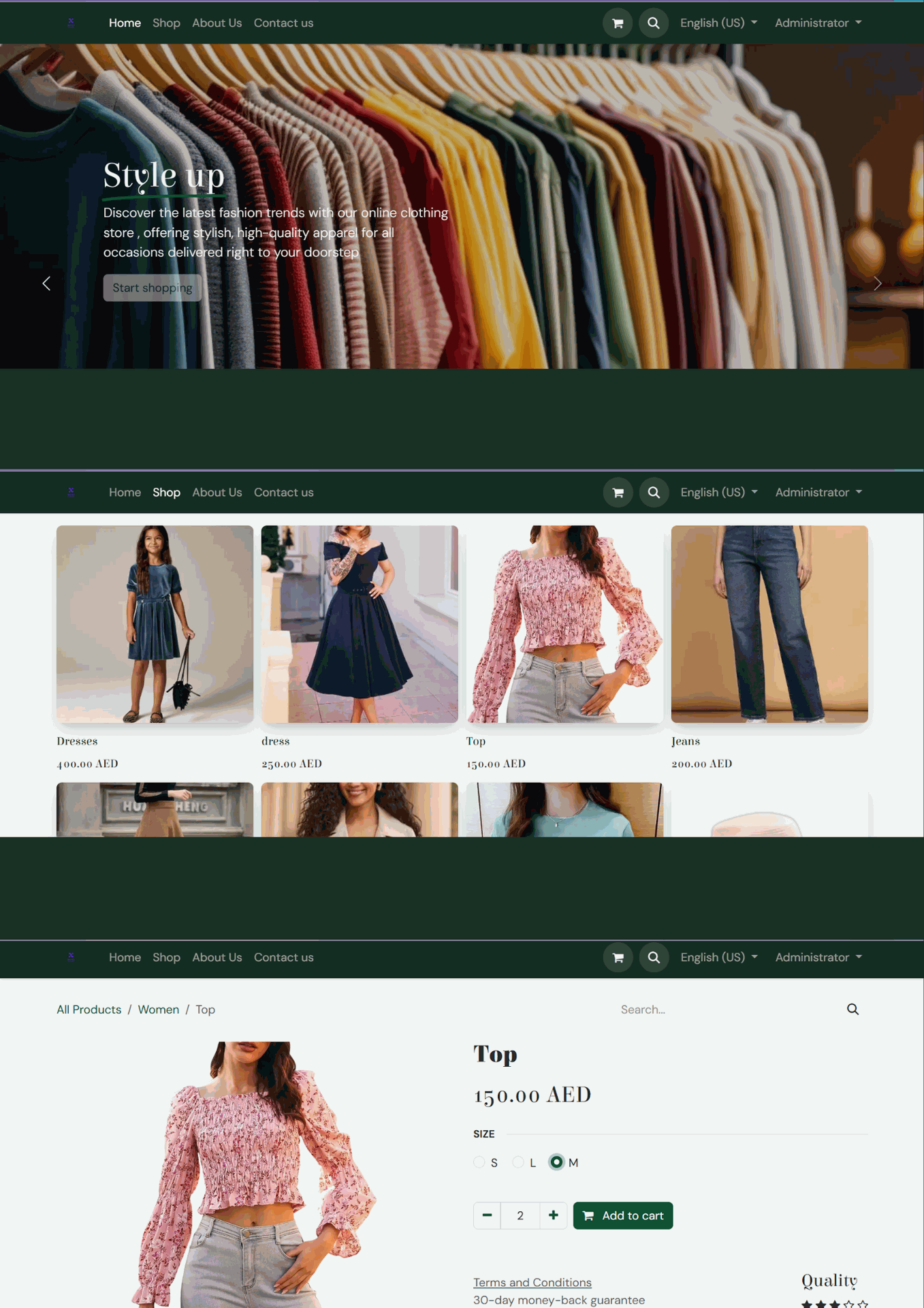
1- flexible user interface
At our company, we specialize in creating personalized e-commerce platforms tailored to your unique vision. Whether it’s through custom designs, themes, or functionality, we ensure that your online store aligns perfectly with your brand identity.
Our goal is to create a flexible user interface that offers an intuitive and seamless shopping experience. We present your products in the most organized and appealing way, making it easy for customers to navigate and find what they’re looking for.
Products can be categorized based on your store's structure—whether by type, season, collection, or any other criteria that suits your business. This ensures that customers can easily browse, find, and purchase products in just a few clicks.
Order Process Flow
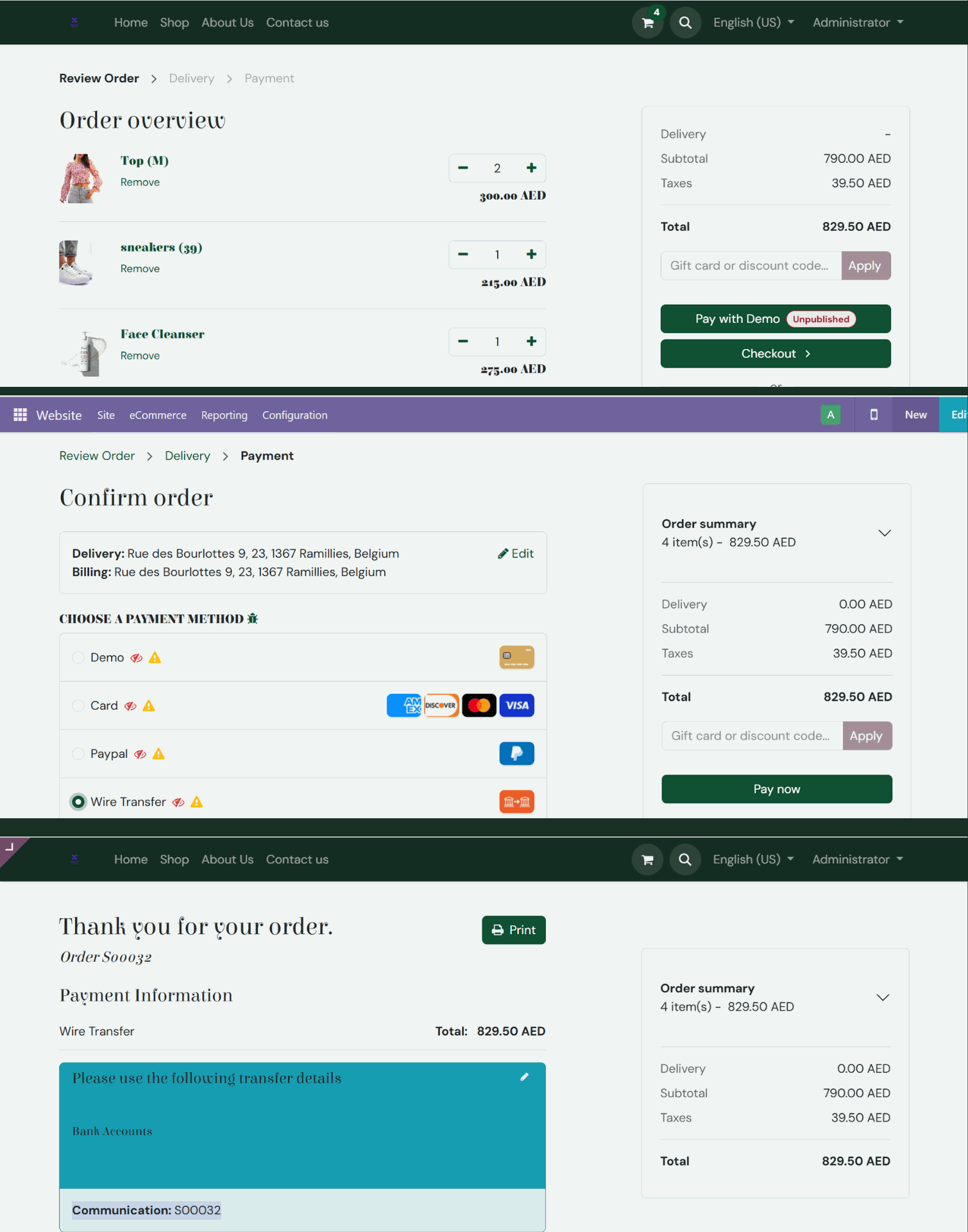
2- Order Process Flow
When a customer visits your store and selects a product, they will be prompted to review their order. After confirming the product details, they will enter their delivery information, including address and contact details.
Next, the customer will proceed to the payment stage. Depending on the company’s policies, payment options may include credit card, cash on delivery, or bank transfer. Once the payment method is selected, the order is completed, and the customer will receive an order number for reference.
After the order is placed, your system will automatically receive the order under the same order number, which must be confirmed. An invoice is generated and sent to the customer via email.
Finally, the payment details must be verified to ensure accuracy before the order is processed further.
Sales Management
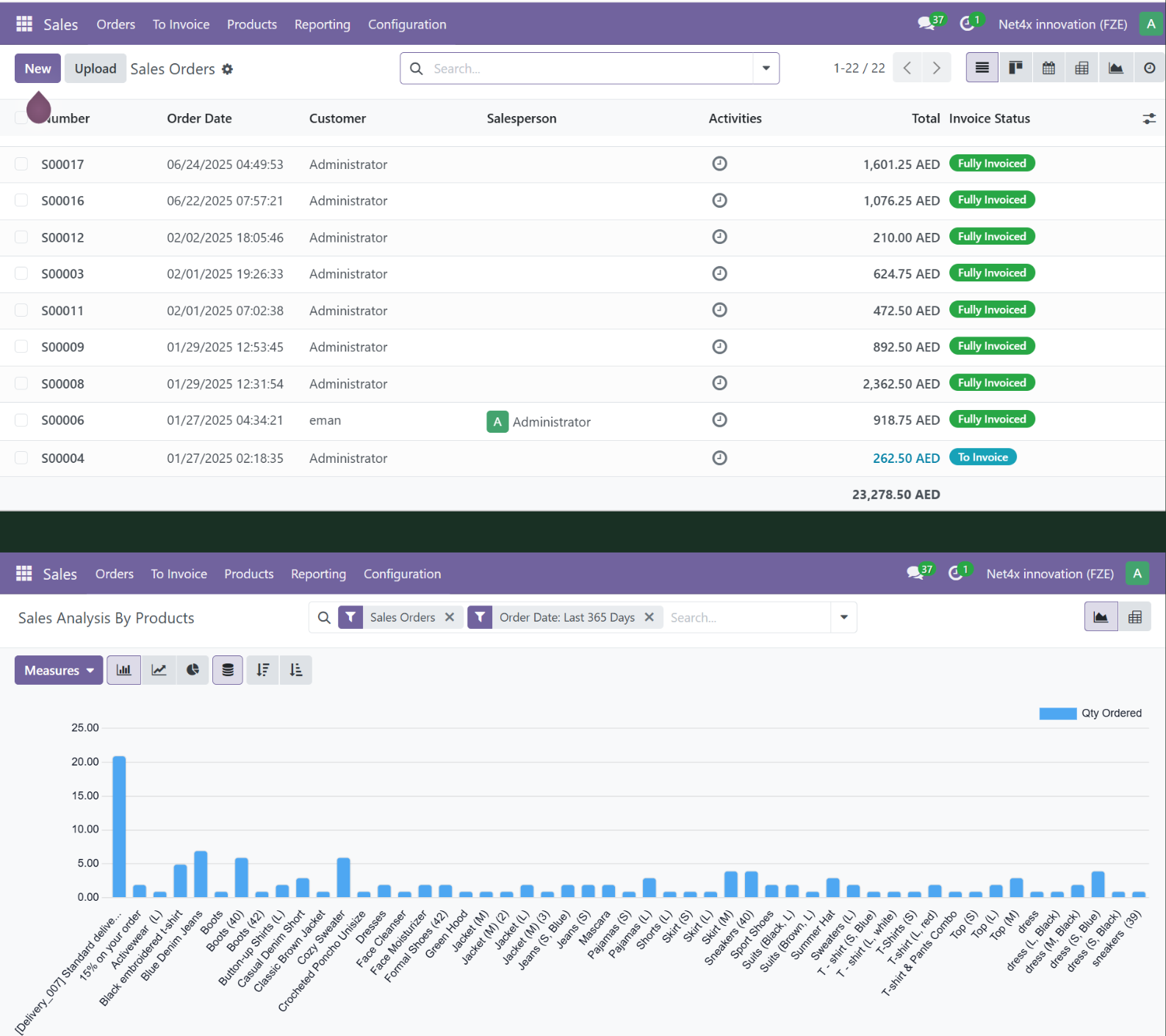
3-Sales Management
In the Sales module, you can review and manage all orders across any date range. This includes tracking whether an order has been fully invoiced or is still pending. If necessary, you can create the invoice and send it directly to the customer.
Additionally, the system allows you to generate detailed sales reports, giving you insights into performance. You can identify your best-selling products and view comprehensive sales data for each item. These features provide valuable insights into product demand, helping you make informed decisions about inventory management and sales strategies.
Invoice Section
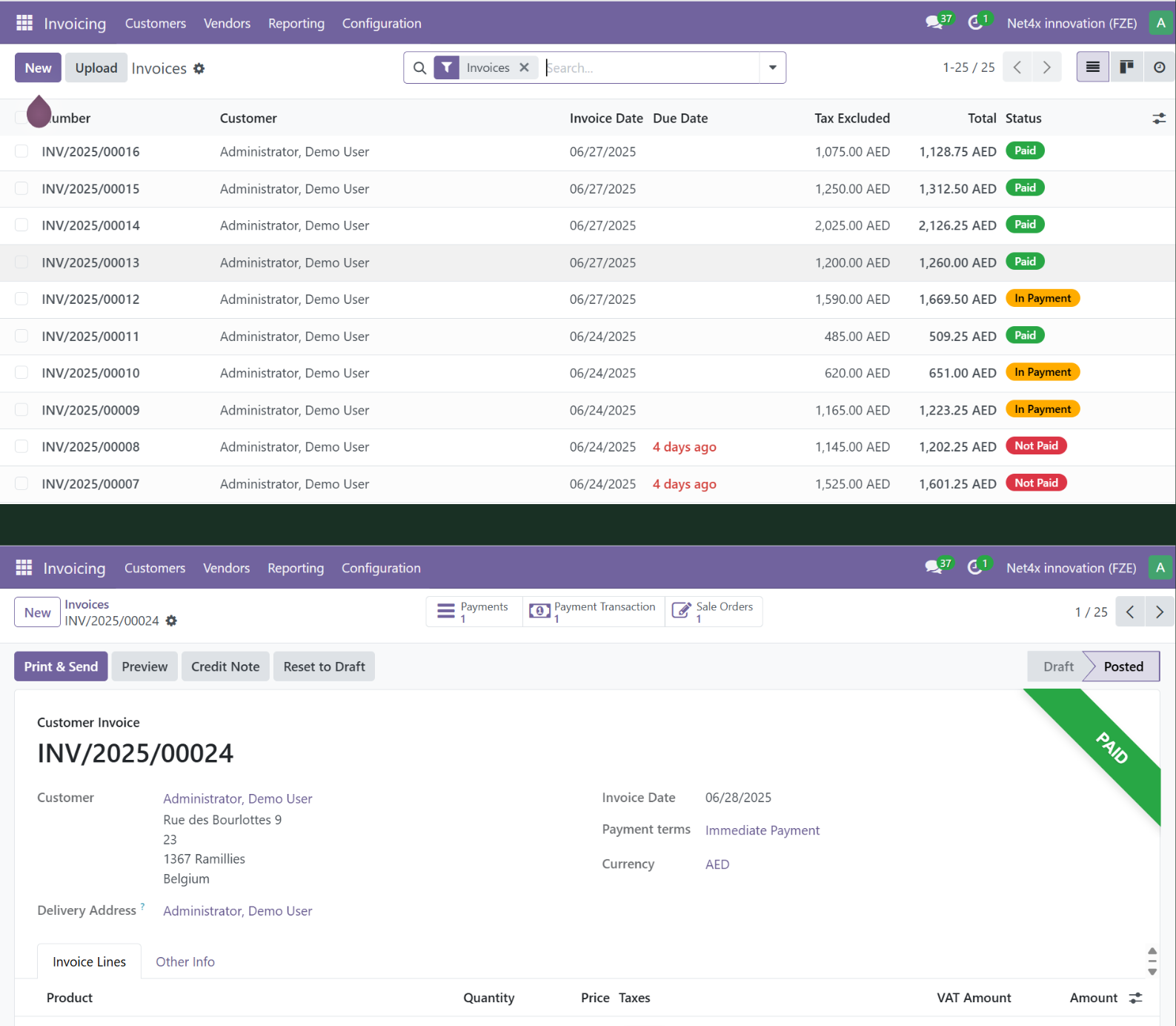
4- Invoice Section:
At this stage, you can review all invoices along with their payment details. You can easily check which payments have been completed, which are still pending, and which are currently in progress. Additionally, you have the option to confirm payments directly from this section.
Inventory
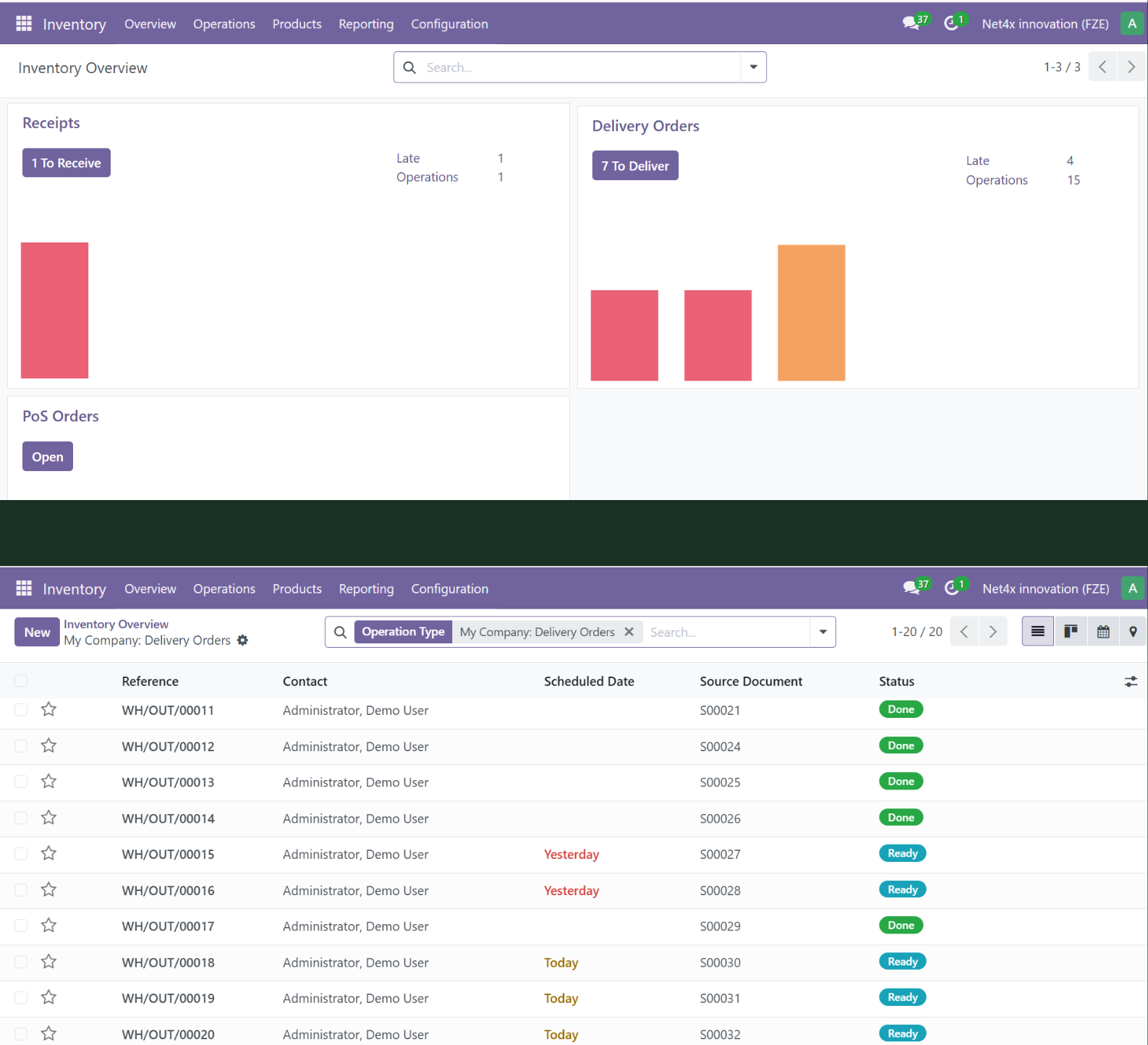
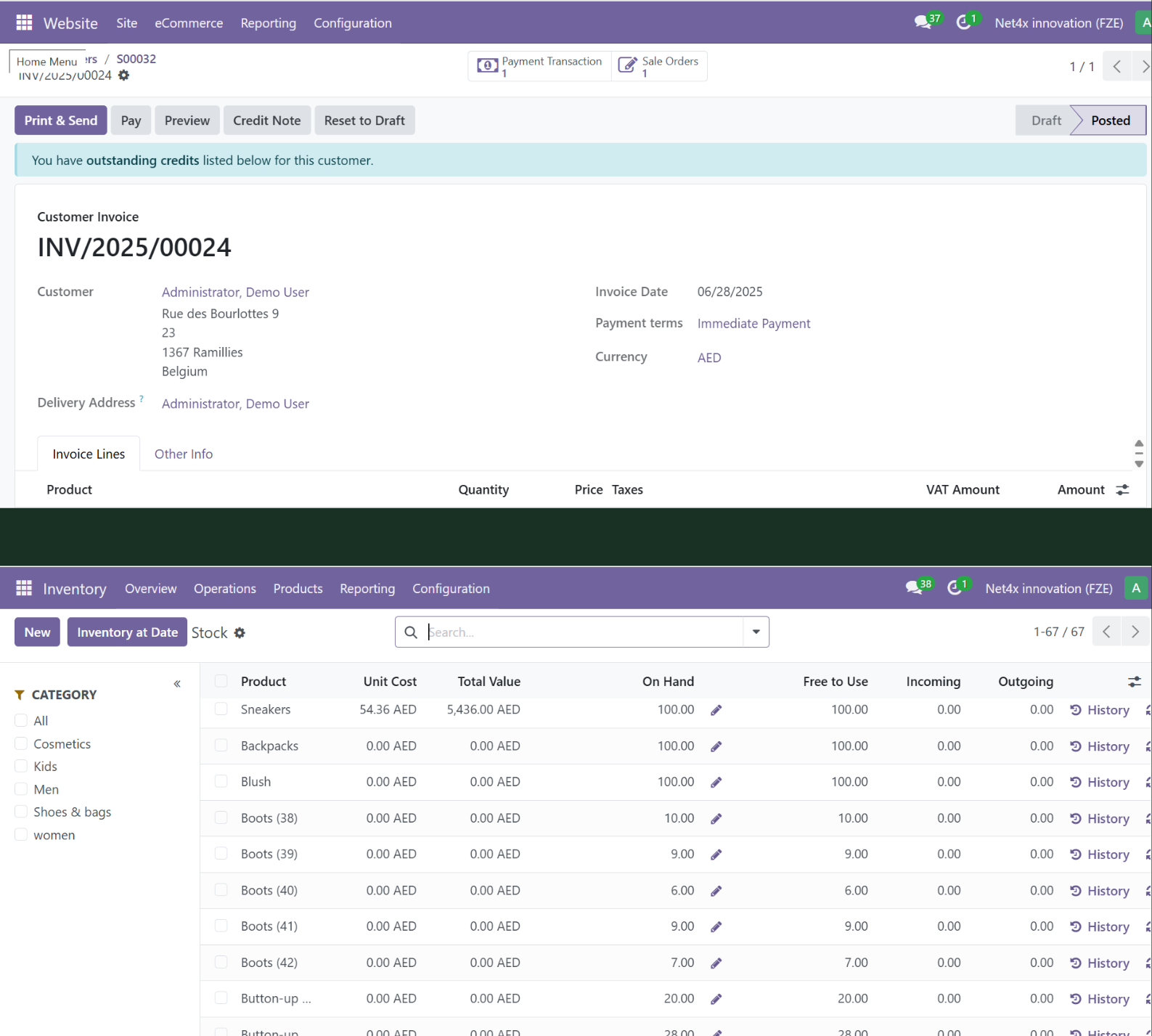
5-Inventory:
Once an order is paid, it will be marked as ready for delivery. You can review the order, schedule a delivery date, and the system will automatically notify the customer via SMS with the details. This helps ensure a smooth and timely delivery process.
The inventory report provides detailed insights into stock levels for all products. It shows the current quantity of each product in stock, as well as the quantity that has already been sold. This helps you keep track of product performance and make informed decisions on restocking or discontinuing items.
Dashboard - Reporting Section
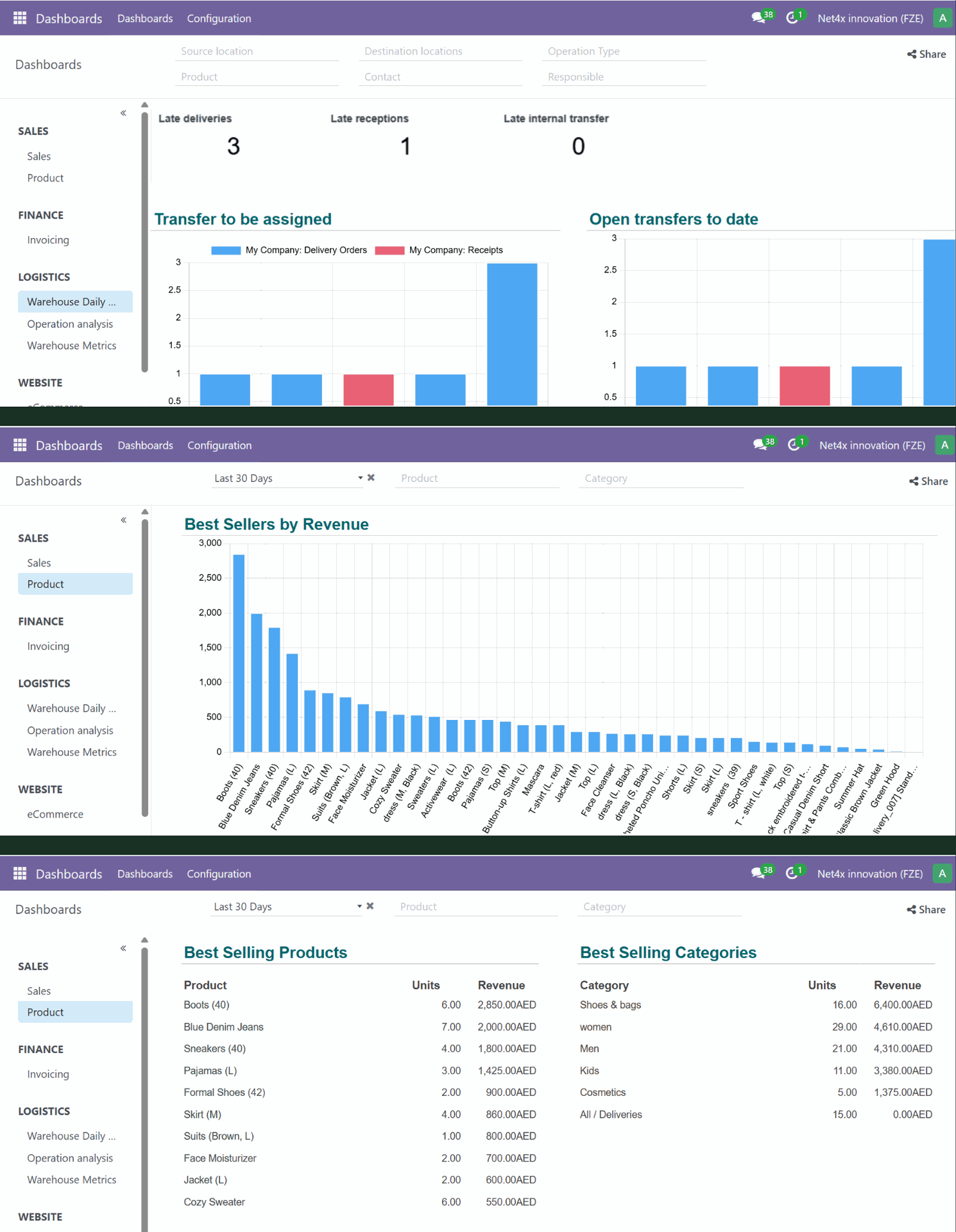
6- Dashboard - Reporting Section:
The dashboard features a specialized section for creating detailed reports across various stages of your ecommerce business. You can generate reports for sales, invoices, inventory, orders, and products. These reports provide insights into revenue, profit, and daily operations, helping you track your performance and make data-driven decisions.
Point of sale
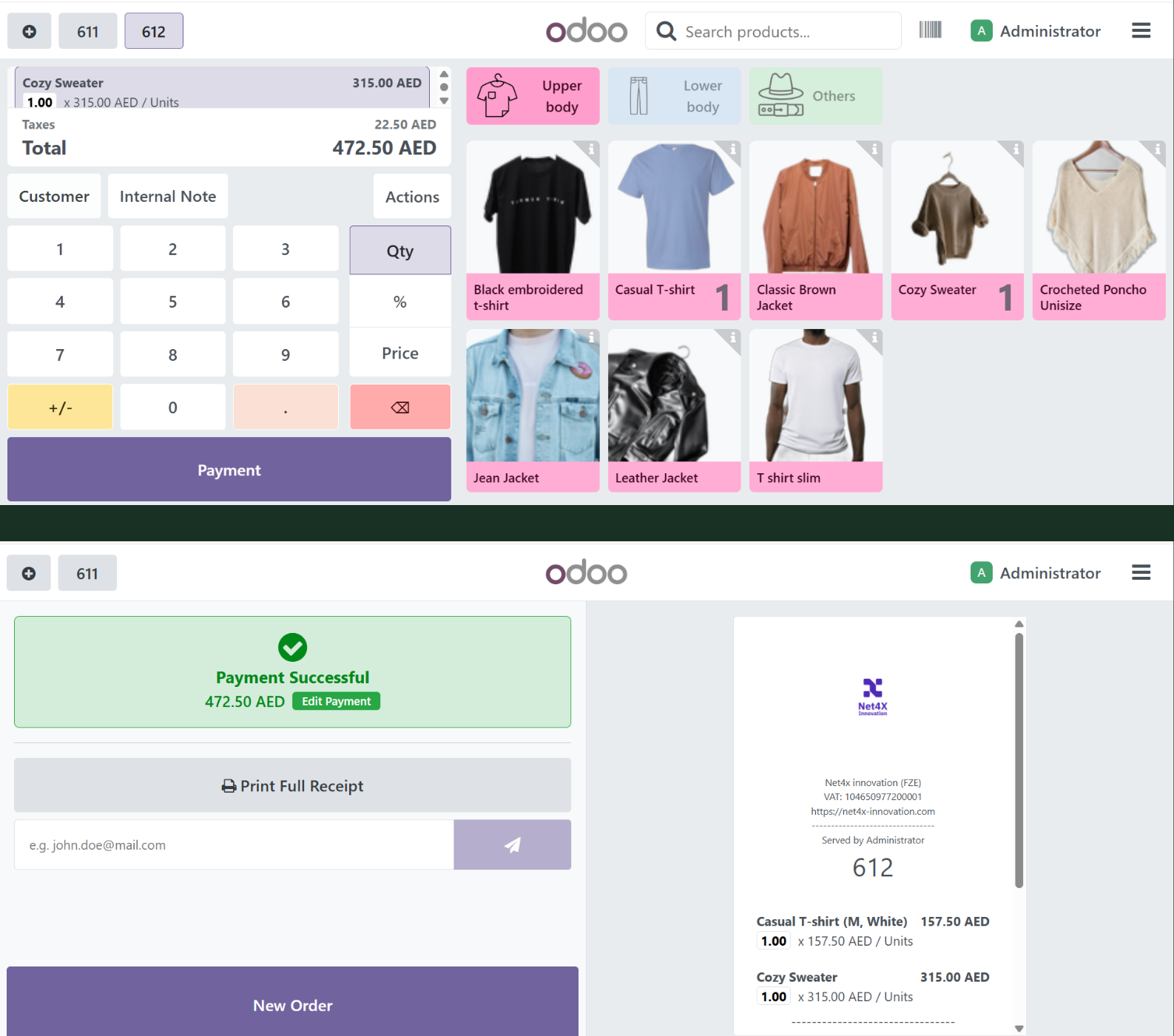
7- Point of sale:
If your company operates a physical store, the POS system allows you to process in-store transactions seamlessly. Simply scan or select the order, complete the payment, and the system will generate the invoice for you. This ensures a smooth checkout process and accurate invoicing.